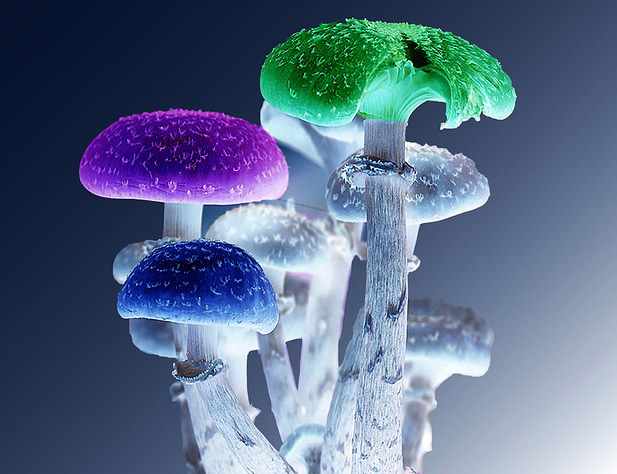현재 위치:홈 > 뉴스현황 > Press Events > Magic Mushrooms Brea...
저자: 업로드:2017-08-29 조회수:
Psilocybin, the psychedelic substance in so-called magic mushrooms, has been used in religious rituals, in recreational and mind-altering pursuits, and in medical studies. Although psilocybin revealed its structural details 60 years ago, and although this psychoactive substance has been tested for its ability to lessen anxiety, relieve depression, and loosen the grip of addiction, psilocybin never gave up its biosynthetic secrets, adding certain practical impediments to its pharmacological development, which was already complicated by psilocybin’s status as a controlled substance.
Although psilocybin has long been regarded with suspicion by law enforcement, it has been coming clean on the biosynthetic front. Details of psilocybin’s enzymatic synthesis have been uncovered by scientists based at the University of Jena and the Leibniz Institute for Natural Product Research and Infection Biology.

In the journal Angewandte Chemie, in an article entitled, “Enzymatic Synthesis of Psilocybin,” the scientists describe psilocypbin’s biosynthetic pathway and introduce a synthetic route that could form the basis of biotechnological production.
“We characterized four psilocybin biosynthesis enzymes, namely i) PsiD, which represents a new class of fungal l-tryptophan decarboxylases, ii) PsiK, which catalyzes the phosphotransfer step, iii) the methyltransferase PsiM, catalyzing iterative N-methyl transfer as the terminal biosynthetic step, and iv) PsiH, a monooxygenase,” wrote the article’s authors. “In a combined PsiD/PsiK/PsiM reaction, psilocybin was synthesized enzymatically in a step-economic route from 4-hydroxy-l-tryptophan.”
Psilocybin’s effects stem from tryptamines, which are chemical derivatives of the amino acid L-tryptophan and structural relatives of the neurotransmitters serotonin and melatonin. Among these, psilocybin is the primary chemical mushroom component. Psilocybin is an inactive precursor that is rapidly activated when consumed: splitting off a phosphate group results in the actual active ingredient, psilocin.
Researchers working with Dirk Hoffmeister, Dr. rer. nat., at the Friedrich Schiller University of Jena have now figured out how psilocybin is synthesized. They have identified the four enzymes that transform the amino acid L-tryptophan into psilocybin. Using genetic technology, the researchers were able to produce the enzymes in bacterial and mold fungi cultures and characterize them.
Based on this knowledge, they were also able to clarify the biosynthetic production route, which is different than previously supposed. In the firs